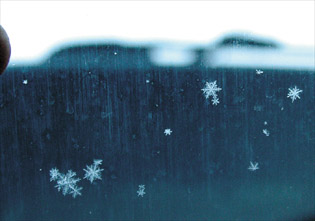

So what about the snowflakes in artificial snow? Because artificial snow machines shoot out a mixture of water and compressed air, the water comes out as fine droplets, the air cools them and the droplets freeze. It can be called a frozen raindrop, as it melts and. Like sleet, freezing rain usually starts as snowflakes, and then falls through a warm layer in the atmosphere where it turns into rain. Libbrecht received the esteemed Lennart Nilsson Award this year for his work with what he calls "nature's frozen art." The Nilsson Prize is awarded by the Karolinska Institute, and is considered the Nobel Prize of scientific photography. In the United States, it is also considered as precipitation in the form of a mixture of rain and snow. The formation of freezing rain is very similar to that of sleet so similar, in fact, that you’ll often see sleet and freezing rain at the same time if the surface temperature is just right32 degrees F. He is one of the world's top snowflake experts, and has written seven books on the subject. He uses a high-quality, low-power photo-microscope that he designed himself to study snow crystals up close.

Libbrecht studies the physics of crystal growth basically how temperature and electrical charges interact to produce snow crystals.

In 1951, the International Commission on Snow and Ice produced a fairly simple and widely used classification system for solid precipitation (stuff that’s not rain but falls from clouds), which defined the seven basic snow crystal types as plates, stellar crystals, columns, needles, spatial dendrites, capped columns and irregular forms - the most common snow crystals.Ĭaltech physicist Kenneth Libbrecht, however, prefers to use his classification system of 35 types of snow crystals. A snowflake typically begins as a single ice crystal, then becomes more complex by growing branches, combining with other ice crystals, and even gathering tiny frozen water droplets on its surface from within the cloud. Intricate patterns emerge as the ice crystals grow. Snow crystals form when water vapor within a cloud shrinks directly into ice. Johannes Kepler, a 17th-century astronomer and mathematician, discovered that all snowflakes are unique variations on a six-sided crystal. Snowflakes have fascinated scientists for centuries. Sometimes raindrops freeze as they fall, but this is called sleet, not snow, and it doesn't have any of the elaborate and symmetrical patterning found in snowflakes. Snowflakes are made of ice, but they are not just frozen water. But did you know that snowflakes grow? How Snowflakes are Formed You may already know that each snowflake is unique - there are never two created exactly alike.


 0 kommentar(er)
0 kommentar(er)
